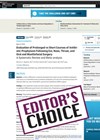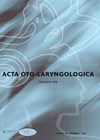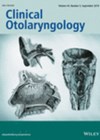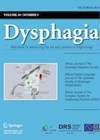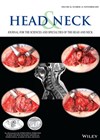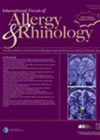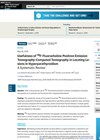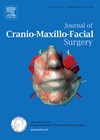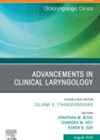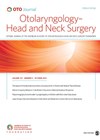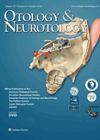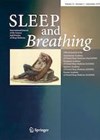
Journal Reviews archive for January 2020
Antibiotic prophylaxis in otolaryngologic surgery. Less is better!
Jan/Feb 2020 Editor’s Choice is a review of antibiotic prophylaxis in ENT and OMF surgery. It is not the first systematic review and meta-analysis published in the last two years. If anyone else has been offered a “potentially career-altering opportunity”...
Silent sinus syndrome: which approach offers the best outcome?
Silent sinus syndrome (SSS) is a rare condition with patients presenting as spontaneous, painless enophthalmos, hypoglobus, orbital asymmetry, and maxillary sinus collapse on the ipsilateral side. The orbital resorption occurs secondary to negative pressure created in the maxillary sinus by...
Is the greater auricular nerve important in parotid surgery?
The greater auricular nerve (GAN) is often partially or totally sacrificed during parotidectomy procedures. This was a retrospective study comparing auricular sensation and quality of life in patients that either had their GAN preserved or sacrificed. In the shortterm, patients...
Sarcopenia and dysphagia in older community-dwelling adults
The prevalence of dysphagia in community-dwelling older adults is reported to be around 15%. Outside of common neurological causes such as stroke, Parkinson’s disease and dementia, recent studies have suggested that sarcopenia may be an independent risk factor for the...
Surviving oropharyngeal squamous cell carcinoma – does subsite matter?
Human papilloma virus (HPV) status is a known prognostic factor in oropharyngeal squamous cell carcinoma (OPSCC). The eighth edition of American Joint Cancer Committee (AJCC) has modified the TNM staging to reflect this. However, subsite as an independent prognostic factor...
The search for the holy grail of rhinosinusitis: another step towards phenotyping in CRS wNP?
For many years, scientists and clinicians have been trying to understand the infinite variability within the term ‘rhinosinusitis’ using radiology, basic science, epidemiology and then using their insights to solve the riddle of management: how to explain why some patients...
Choline PET-CT: an accurate diagnostic tool for the detection of parathyroid adenoma?
Hyperparathyroidism (HPT) is an endocrine disorder characterised by an increase in the secretion of parathyroid hormone (PTH), with a resulting increase in calcium plasma levels, which can cause renal lithiasis, fractures, and osteoporosis, the most frequent symptoms of the disease....
Using autologous blood to reduce postoperative infections
The removal of impacted wisdom teeth is a common surgical procedure with possible complications including postoperative bleeding and wound infection and alveolar osteitis. Preventing osteitis is dependent on retaining the blood clot in the socket with no infection. There are...
Medication and its effect on the larynx
This article summarises different medications and their effect on the voice. A growing number of patients we see in clinic are on multiple medications that could affect vocal cord function. The author summarises different classes of medications and their potential...
Elevated prevalence of late-onset dysphagia among head and neck cancer survivors and identifying risk factors
Dysphagia is one of the most common problems affecting head and neck cancer (HNC) survivors. There are few studies investigating late-onset dysphagia post-treatment. The authors set out to investigate the prevalence of dysphagia-related diagnoses and procedures five years’ post-treatment, changes...
Should we be doing earlier MRIs in sudden sensorineural hearing loss?
There is recognised variation between ENT departments in exact imaging protocols for the workup of idiopathic sudden sensorineural hearing loss (ISSNHL) but a routine MRI to exclude retrocochlear pathology is standard, usually following immediate treatment with oral +/- intratympanic steroids....
An alternative device for obstructive sleep apnoea
Continuous positive airway pressure (CPAP) is the first-line treatment for obstructive sleep apnoea (OSA), primarily due to the vast amount of short-term evidence in the medical literature it has accrued. The enduring obstacle to CPAP from becoming a treatment option...

